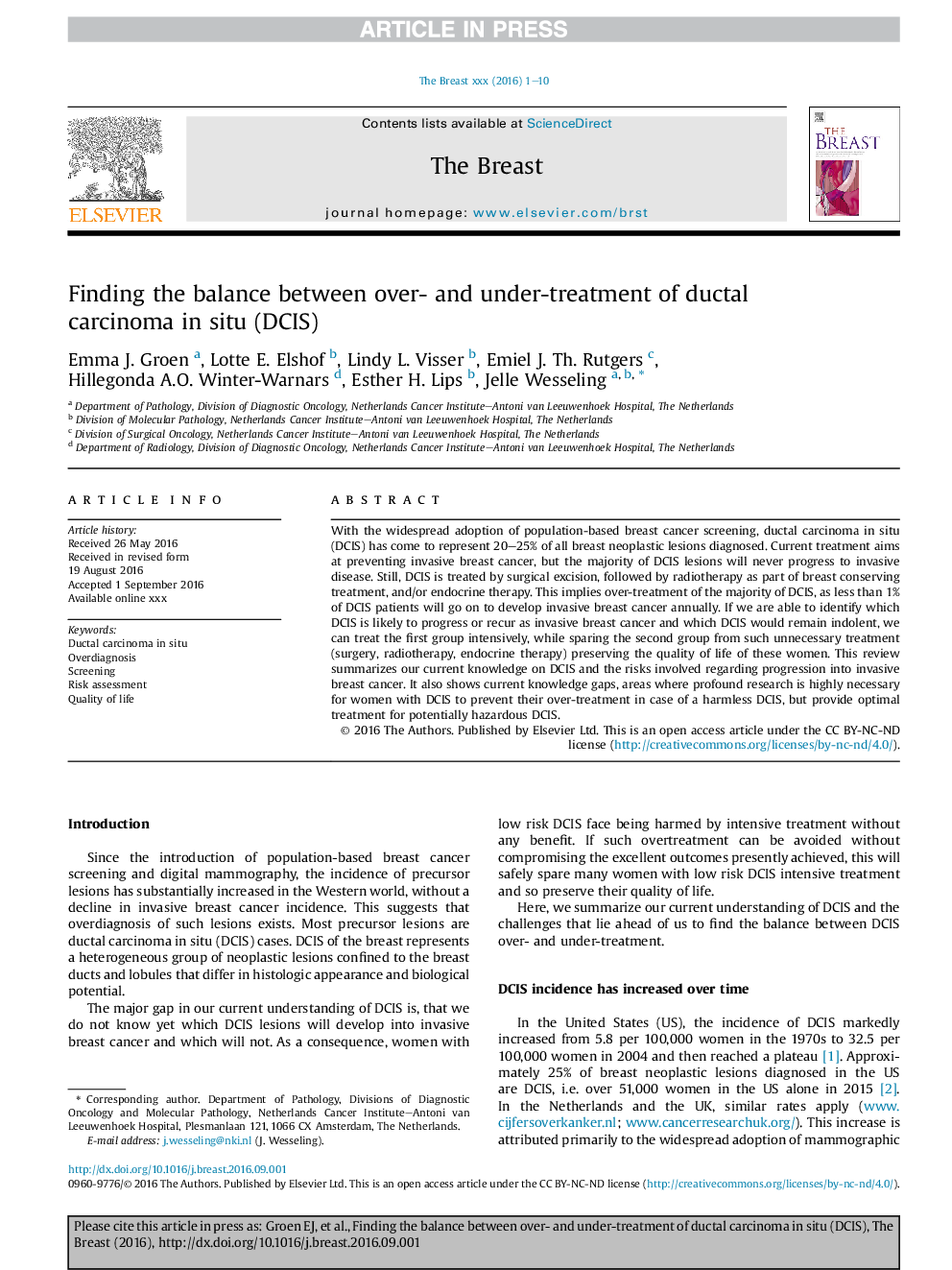| Article ID | Journal | Published Year | Pages | File Type |
|---|---|---|---|---|
| 5693729 | The Breast | 2017 | 10 Pages |
Abstract
With the widespread adoption of population-based breast cancer screening, ductal carcinoma in situ (DCIS) has come to represent 20-25% of all breast neoplastic lesions diagnosed. Current treatment aims at preventing invasive breast cancer, but the majority of DCIS lesions will never progress to invasive disease. Still, DCIS is treated by surgical excision, followed by radiotherapy as part of breast conserving treatment, and/or endocrine therapy. This implies over-treatment of the majority of DCIS, as less than 1% of DCIS patients will go on to develop invasive breast cancer annually. If we are able to identify which DCIS is likely to progress or recur as invasive breast cancer and which DCIS would remain indolent, we can treat the first group intensively, while sparing the second group from such unnecessary treatment (surgery, radiotherapy, endocrine therapy) preserving the quality of life of these women. This review summarizes our current knowledge on DCIS and the risks involved regarding progression into invasive breast cancer. It also shows current knowledge gaps, areas where profound research is highly necessary for women with DCIS to prevent their over-treatment in case of a harmless DCIS, but provide optimal treatment for potentially hazardous DCIS.
Related Topics
Health Sciences
Medicine and Dentistry
Obstetrics, Gynecology and Women's Health
Authors
Emma J. Groen, Lotte E. Elshof, Lindy L. Visser, Emiel J. Th. Rutgers, Hillegonda A.O. Winter-Warnars, Esther H. Lips, Jelle Wesseling,
